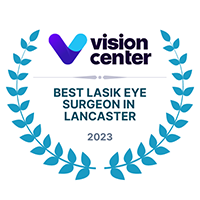For those that are considering LASIK, it’s important that candidates meet a list of certain criteria. These qualifications exist to ensure that you receive the best possible results from LASIK and are able to go through recovery quickly and easily.
If you find that you are lacking one or more qualifications, don’t worry. Many of the qualifications simply require you to wait or to take care of some pre-existing issues. In most other cases, there are suitable alternatives to LASIK that will achieve the same or similar results! Here are some of the most common criteria for LASIK eligibility.
Prescription Fluctuations
The core reason many of the following qualifications exist is because of prescription fluctuations. If your prescription has changed significantly within a short amount of time, you will be unable to receive LASIK. The worry is that when you have the surgery performed, you won’t be at your natural prescription, and the surgery will have incorrectly corrected your eyes. Then, when your eyes eventually revert to their normal state, your vision will not be clear. As you will soon see, your prescription can change for a wide variety of reasons. As a general rule, your prescription will need to be stable for at least a year to be considered for LASIK.
General Health
Certain health conditions can affect your eyesight, or otherwise make you unable to safely receive LASIK. For example, uncontrolled diabetes can cause your vision to fluctuate. It also puts you at the risk of diabetic retinopathy which can severely damage your vision. If you have diabetes in the form of either type 1 or 2, the surgeon will need to test your blood sugar as well as see your diabetic history. Other contraindications include autoimmune diseases or anything that impacts your ability to heal.
Age
When you are young, your prescription is likely to change quickly and without warning. This is due to your hormones fluctuating. LASIK is unavailable to patients under 18 because of this, though many are recommended to wait until they are in their mid twenties to ensure that their vision is stable. Once your prescription has stabilized, you may be considered a qualified candidate for LASIK.
Pregnancy
Pregnancy hormones also affect your vision. You should wait for a few months after nursing is finished to consider LASIK.
Corneal Thickness
How LASIK operates is why this qualification exists. During LASIK, a “hinged door” (otherwise called a flap) is created from the top layer of your cornea, which is called the epithelium. This flap is lifted so that the surgeon can remove a tiny amount of corneal tissue in the middle layer. When the flap is placed back down, it will be left to heal. If your corneas are naturally thin, your flap will be especially susceptible to damaged. If you are seeking vision correction with this issue, your doctor may recommend considering PRK instead. In PRK, a section of the epithelium is removed entirely and left to heal, in lieu of a flap. This slightly lengthens recovery time but reduces the risk of complications occurring. To find out more about LASIK and whether or not you qualify, contact us at our office in Dallas, TX to set up a consultation!






